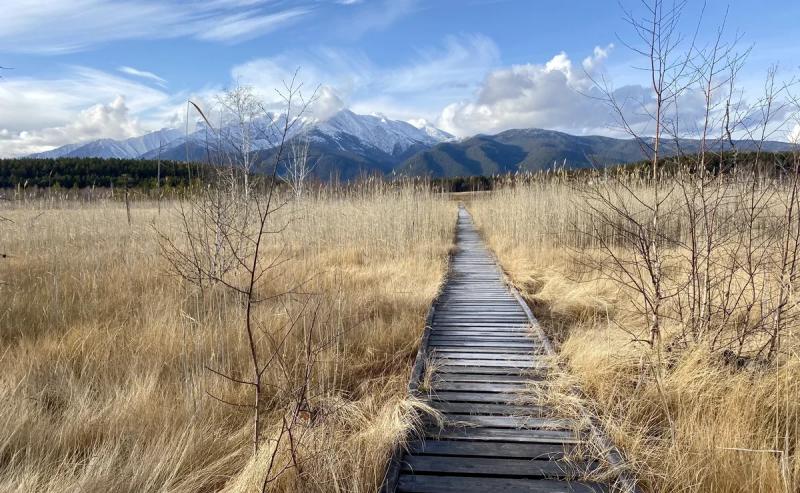
“Happy” and the truth are found here and there along the roads when driving across the steppe. They look quite well-fed and peaceful.
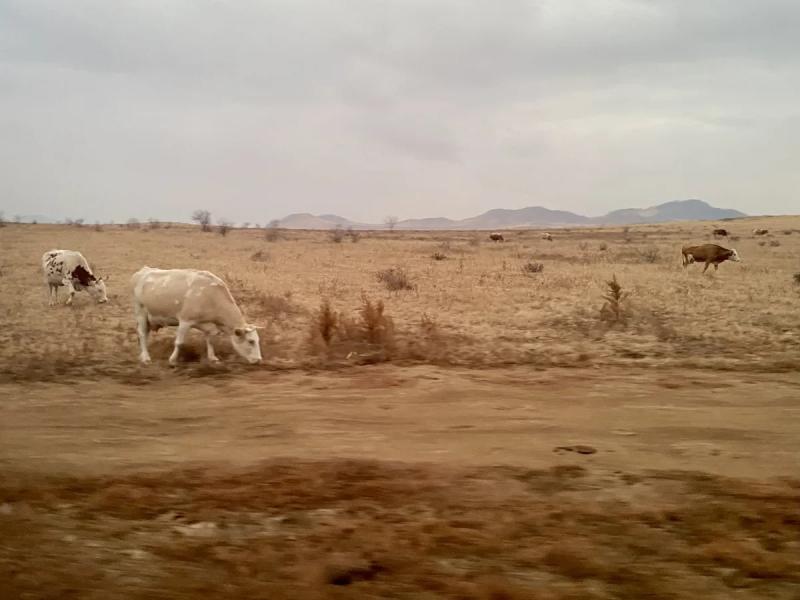
Cows walking in the steppe. Photo ATOR
BUDDHISM AND SHAMANISM DO NOT EXIST HERE “FOR TOURISTS”, BUT AS AN ORGANIC PART OF EXISTENCE
Slightly cheered up travelers are taken for spiritual food – to the Ivolginsky datsan. Unexpectedly bright in the midst of restrained colors of the steppe, the new majestic temple greets with a measured and lingering sound of a mantra. The sound spreads throughout the complex and seems to permeate visitors through and through.
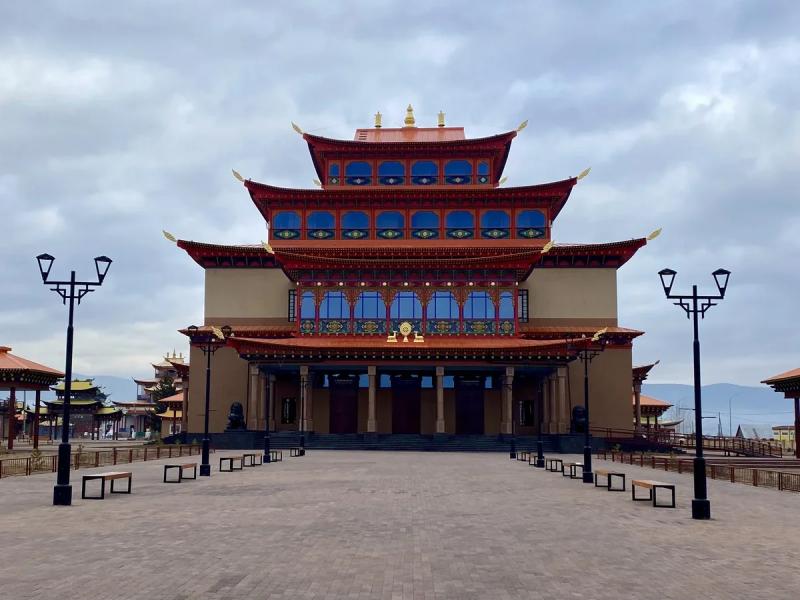
Ivolginsky datsan, photo ATOR
Buddhist attributes, usually familiar to tourists in hot and humid Southeast Asia, under a light snowfall, it exacerbates the contradiction between reality and your ideas about it.
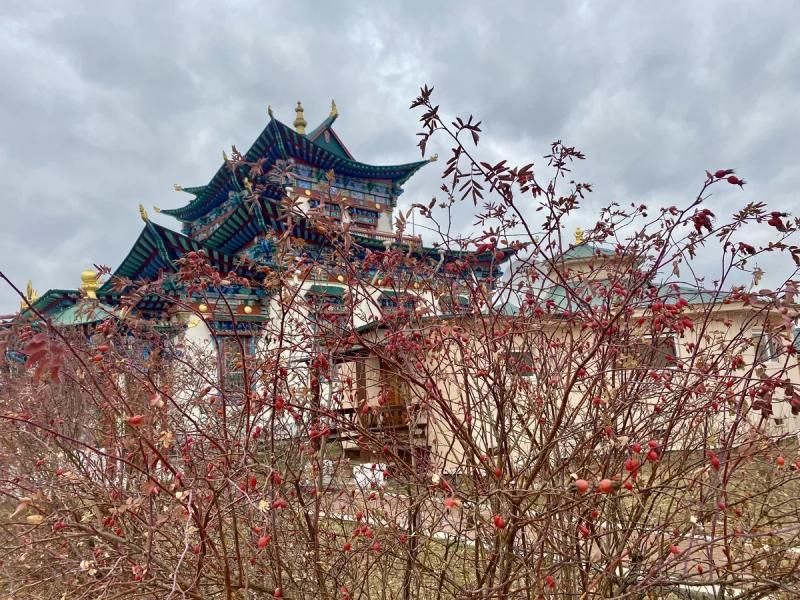
Wishes made in datsan come true. Photo by ATOR
It’s better to get used to this feeling right away: stereotypes here will collapse one by one like a house of cards.
On the plateau of Genghis Khan, which is also called the “Troll Language”, where the supposedly great commander once pitched a tent, local adherents of shamanism conduct their rituals. Only here’s the bad luck: they are not here at all to “entertain tourists with ancient rituals and legends.”
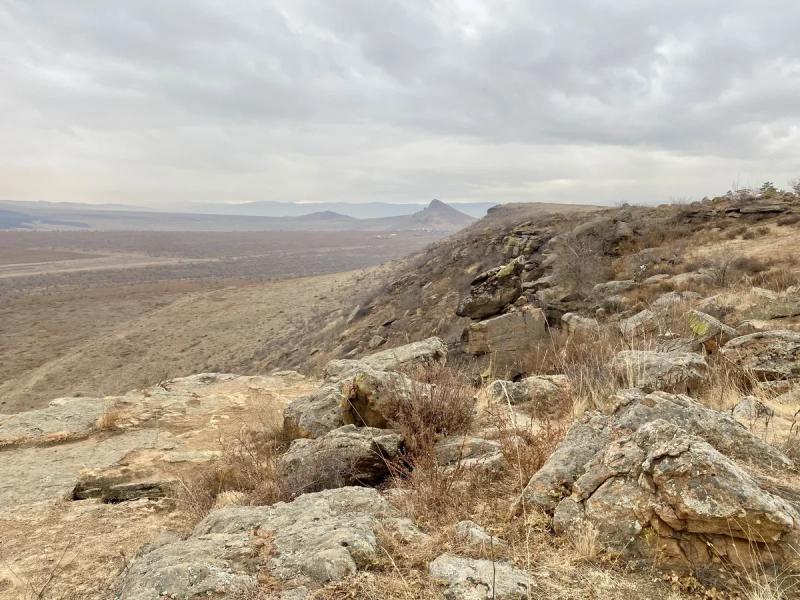
On the plateau of Genghis Khan, Buryatia. Photo by ATOR
They consider this place sacred and came according to their own beliefs. For them, these are not legends, but a natural and harmonious part of life. An ordinary life in this red steppe without end, among stones and grasses, dried up by November.
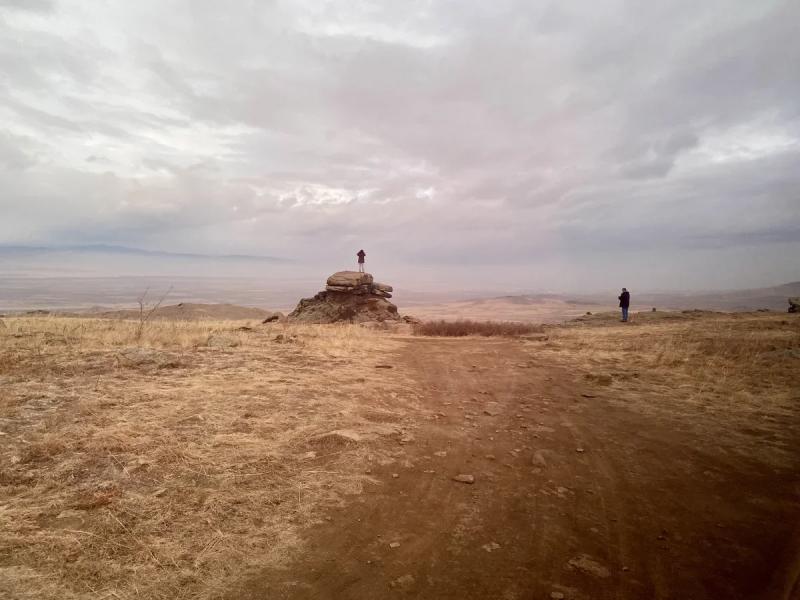
Martian landscapes of Buryatia. Photo by ATOR
And yes, the locals actually go to shamans, some to lamas, not only in spiritual pursuits, but also for help in difficult everyday matters: when it’s time to get married, whether to start a new business, and so on.
This land lives at the same time in modernity and the foundations of a thousand years ago that are firmly rooted here. And from that time ceases to make sense: you can only take everything you see for granted.
ABOUT TIME, GEOMETRY, SPACE AND GEOGRAPHY
“You sedentary people live in categories of time and geometry. Nomads live by space and geography,” says guide Dorima Togosheeva.
There are no addresses for nomads, they say. There is a concept of “uno over that mountain!”. And time flows here on its own, too. The sun, of course, will rise and set without any of your participation. And therefore it makes a lot of sense to just relax and immerse yourself in an incomprehensible, unfamiliar, maybe a little frightening, but exciting atmosphere of local existence.
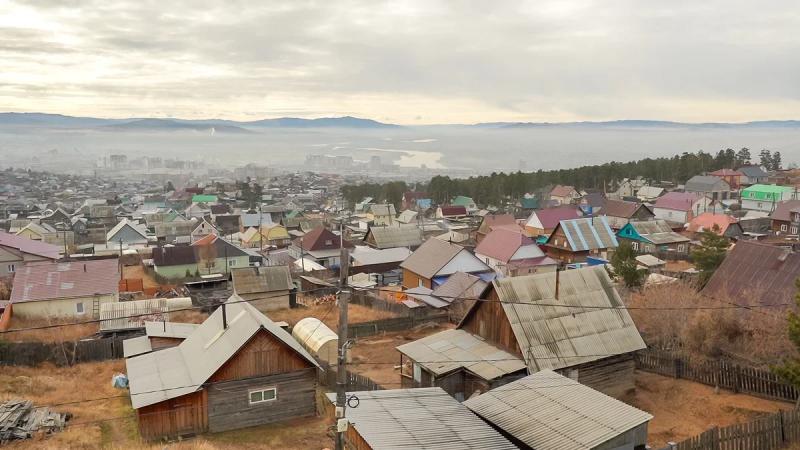
Nomadic peoples have their own view of time and space. Photo by ATOR
By the way, it is better to be careful with rituals and rituals. They seem to really work. The guide says that in order for the sky to clear, it is necessary to appease the spirits. By “sharing” local spirits, of course. How exactly to “share” with the spirits – there is a special rule, you don’t have to worry about observing the rite – they will teach you everything, it’s understandable.
It is not clear why the sun really comes out from behind the clouds after that.
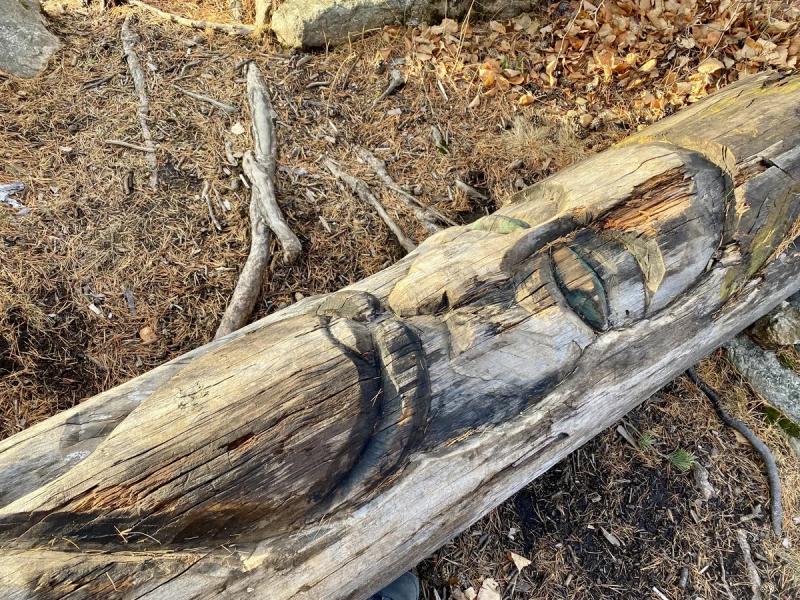
Taiga Spirits. Photo by ATOR
READ ALSO:
- Museum guide to Buryatia
- New Year and “blue ice”. How much do winter tours to Lake Baikal cost
- The new terminal at Baikal airport will open in November
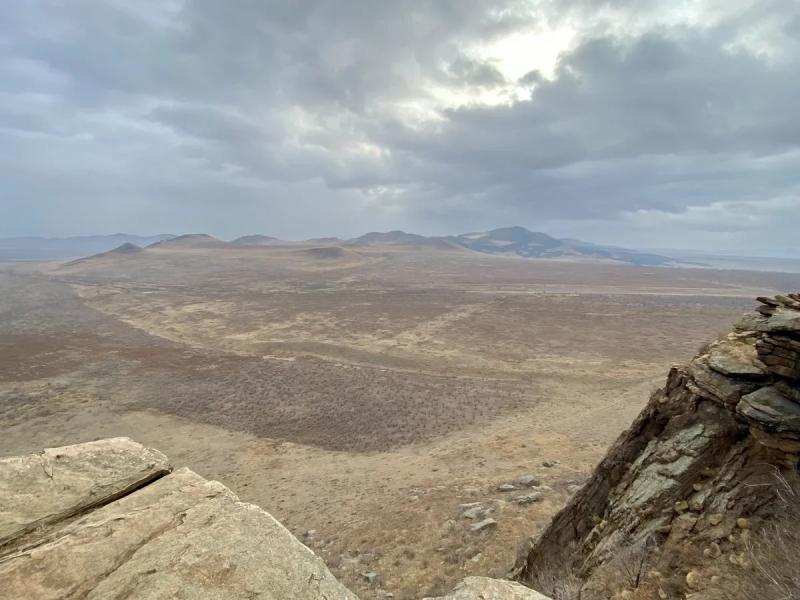
The sun is here, literally, “to lure us.” Photo by ATOR
And why a wish made at a special place for making wishes in a datsan begins to come true in the evening.
It is also not clear how to find the balance again now. I would like to see and learn as much as possible about Ulan-Ude with its buildings in the Stalinist Empire style, decorated with religious Buddhist symbols, and about art with Mongolian motifs, and about the ringing bell of the datsan on Bald Mountain, and about the endemic plankton of Lake Baikal, thanks to which the lake water is so clean.
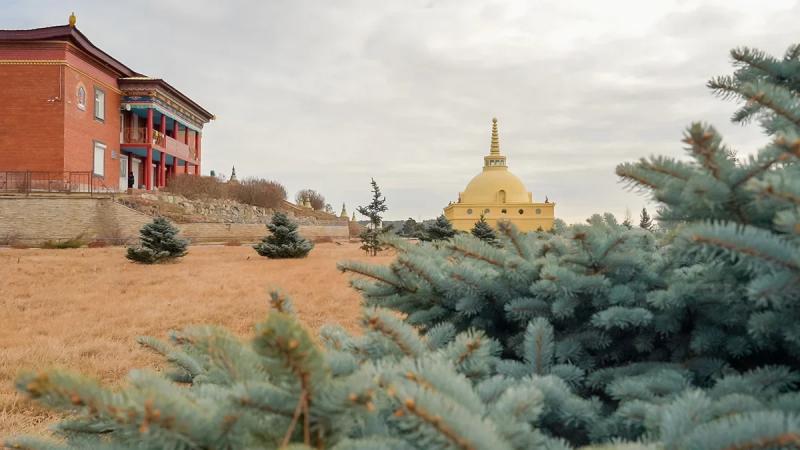
Datsan on Bald Mountain. Buryatia, photo ATOR
But I also want to just sit in silence, absently looking somewhere beyond the horizon.
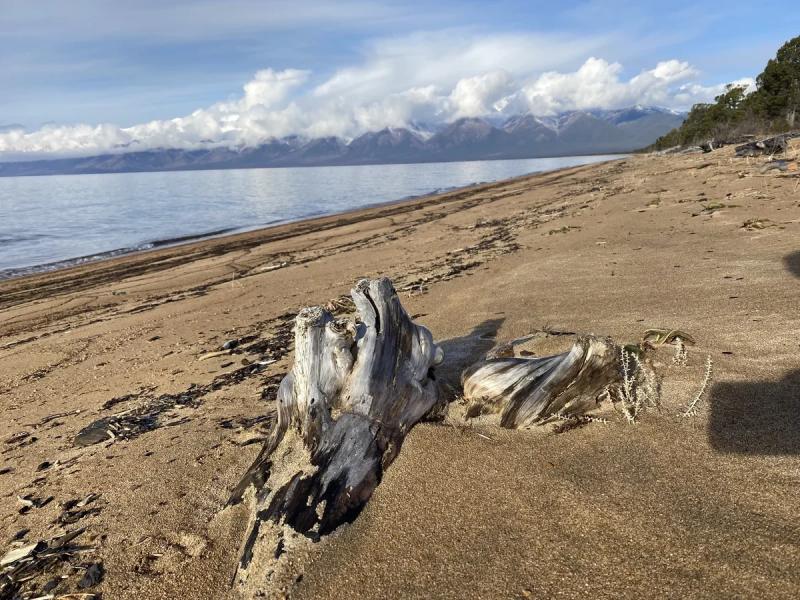
At every point in space here you just want to freeze and look beyond the horizon for a long time. Photo ATOR
I want to get to my destination on time, because the sand dunes of the Baikal National Park will not look at themselves. But I also want to ask the driver to stop at every turn to take a picture of this dense pearl fog, through which thin trunks of bare, already black trees cut through – the only reminder at this moment that you are still on Earth.
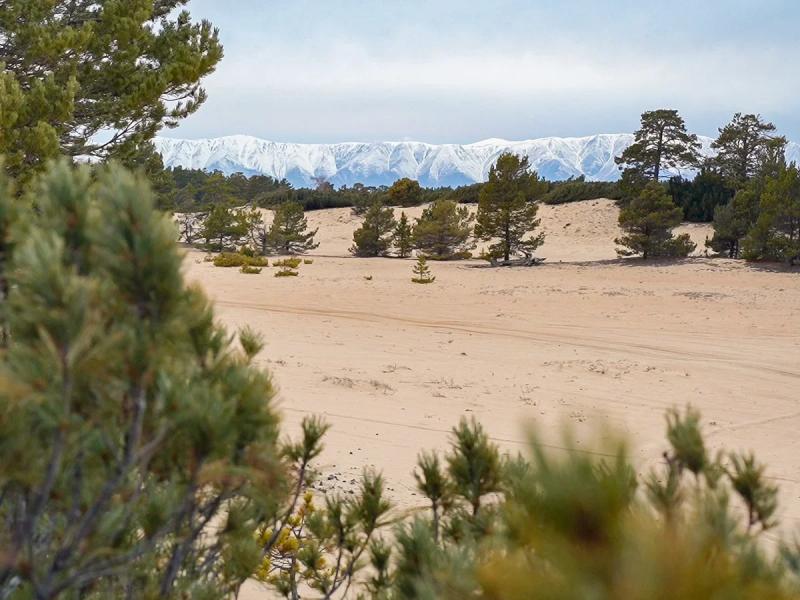
Baikal National Park, dunes. Photo by ATOR
Oh, yes, “time and geometry”, they don’t exist anymore. Therefore, there is no “on time” anymore: as soon as we arrive, we will arrive.
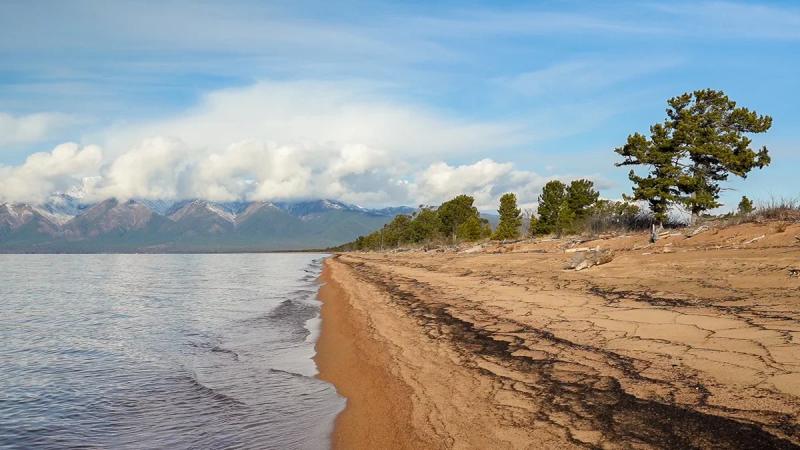
“Time and geometry” in Buryatia dissolve into “space and geography”. Photo by ATOR
And it is still impossible to hide from this peculiar and unfamiliar beauty here – it will mean that there will also be a fog on our soul. Baikal has been splashing here for 30 million years, which means we have nowhere to hurry.
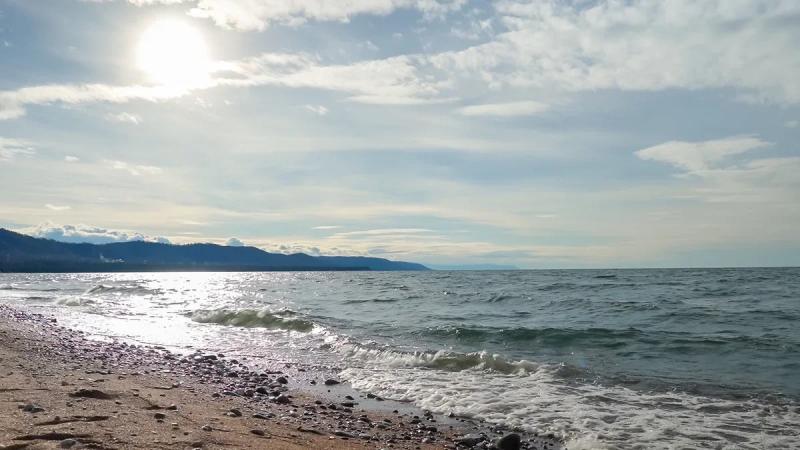
Baikal in November – sun and silence. Photo by ATOR
Therefore, we stop for a leisurely lunch in the town of Turka.
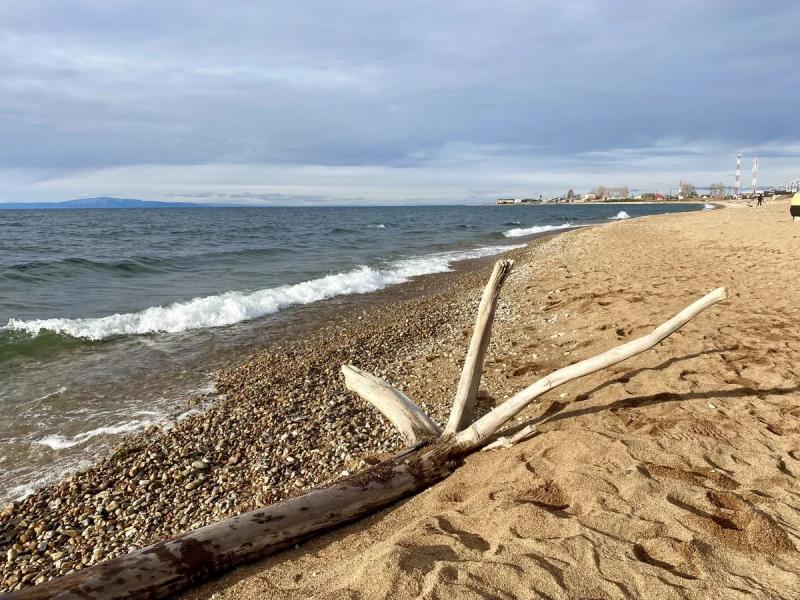
Beach in Turk, Baikal. Photo ATOR
“BODY REJUVENATION” OR HOW TO PLEASE A BURYAT HOUSEWIFE
Omul is served at the table.
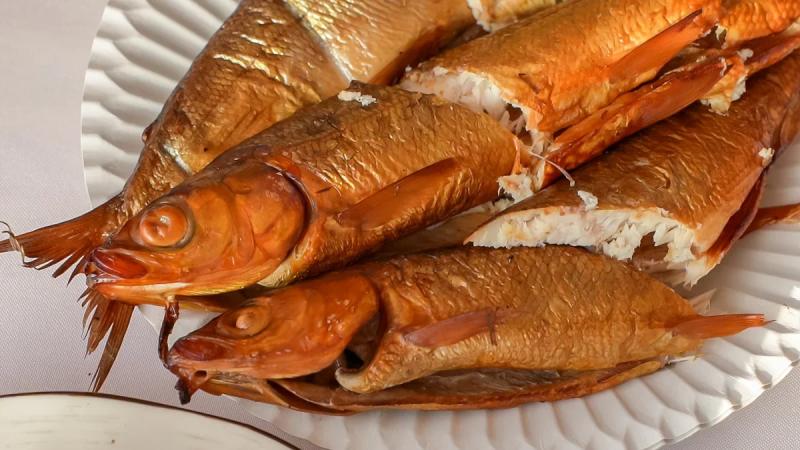
Omul is served to the table. Photo by ATOR
“Don’t believe,” the guide laughs, “that a seal ate omul in Lake Baikal. The seal will not chase him, the seal is lazy, the seal strives for the perfect shape of the ball.”
There is indeed no shortage of omul. The fish is served smoked, in pots, in the form of stroganina and in pies. This is how the “omulation of the body” happens, the locals joke.
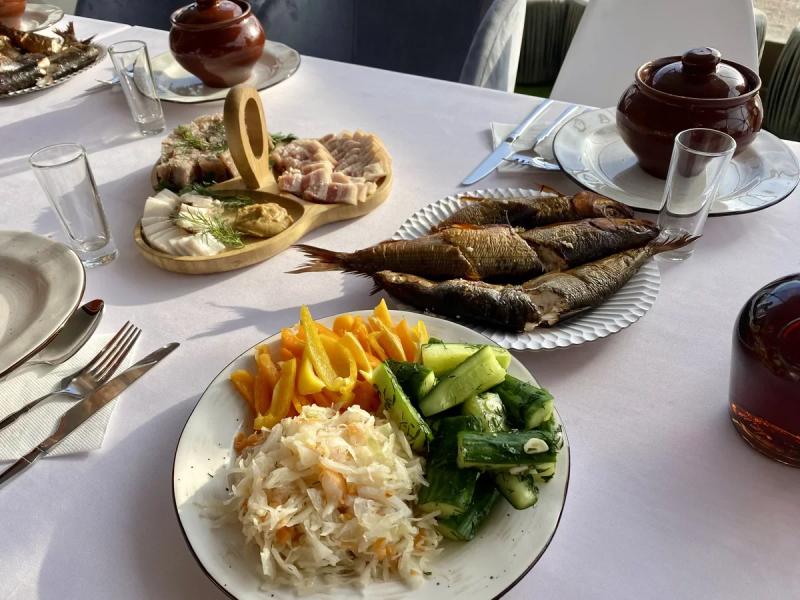
Feast with omul. Photo ATOR
And “tourists are gradually approaching the ideal shape of the ball” too. Because there will be boozies for dinner.
Buryat cuisine is presented as “meat with dough, dough with meat and meat with meat”, which is generally logical, given the specifics of the area and the lifestyle of the population. But they honestly warn that there can be no such bouzas anywhere else, because the whole secret is in the meat, which is uniquely beautiful and fresh here.

For dinner – booze. Photo by ATOR
Two smaller secrets that this dish conceals are, firstly, that the bouzas should not be confused with mantas in any case – the hostess will be very sad. And secondly, they must be eaten by smacking their lips with gusto. And it is advisable to pour broth over it. That’s when the hostess will be happy.
NO NEED TO LOOK FOR MEANING – MEANING FINDS YOU BY ITSELF
And then, when you relax and start eating bouzas, making indecent noises, when you notice how beautifully the cones have settled down under the pine tree and how picturesquely the needles fall off the larches, making the ground around rusty, when you begin to distinguish the shades of water in Lake Baikal and see the beauty of the stones in the steppe, when you abandon the idea that this is here “for tourists”, then the meaning of the journey begins to manifest itself in its entirety.
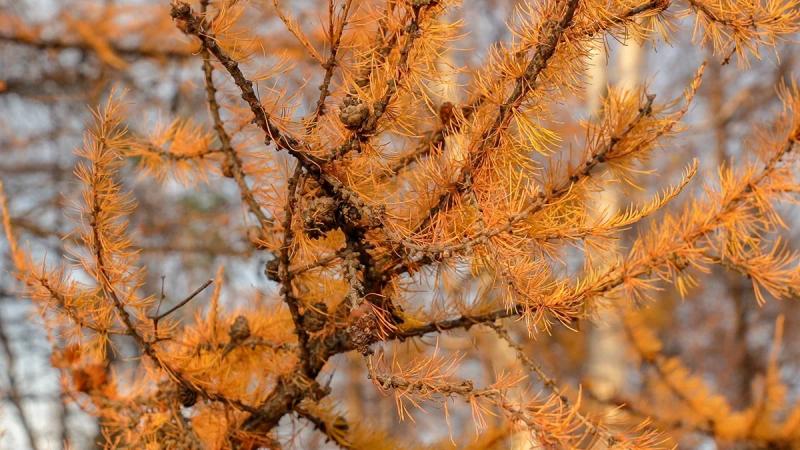
Larch trees fall off and make the ground around them “rusty”. Photo ATOR
In order to get into the Baikal itself, you should also not rush in any case. The most important thing in getting to know the mighty lake, which is called the sea here, is to give yourself time to look at its surface.
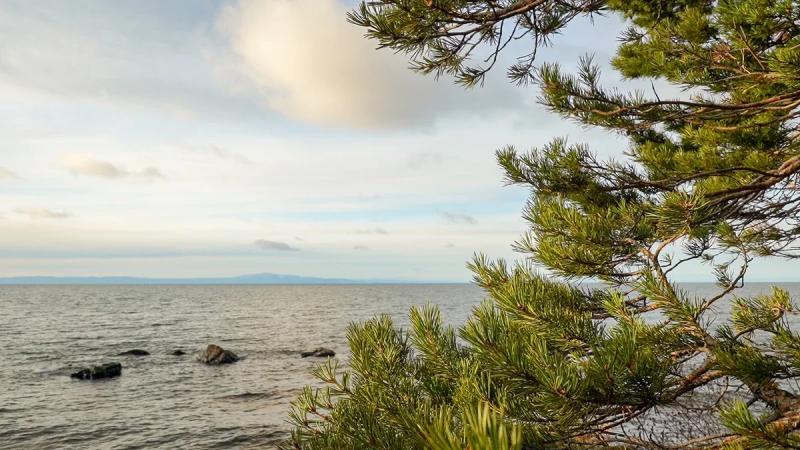
There is no need to rush to Lake Baikal, you need to freeze and look around. Photo by ATOR
Look around and notice how different it is: with the sandy beaches of the Barguzin Bay and rocky shores, with leaden water in bad weather and pale blue water under the sun. And how the mountains of the Holy Nose Peninsula change their texture on the horizon: friendly during the day and sleepy-gloomy at sunset.
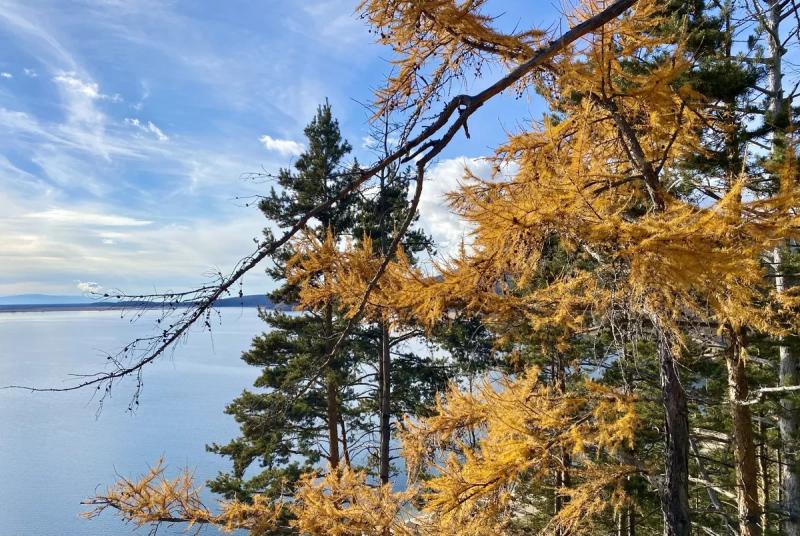
Chivyrkuysky Bay, Baikal, Buryatia. Photo by ATOR
Now, they say, the water in Lake Baikal is “heavy”: It’s not frozen yet, but it’s not warm at all. And it’s true: the trail from the boat in the Chivyrkuy Bay almost does not move to the shore: the wave really “freezes”, remaining dark stripes lying on the smooth water.
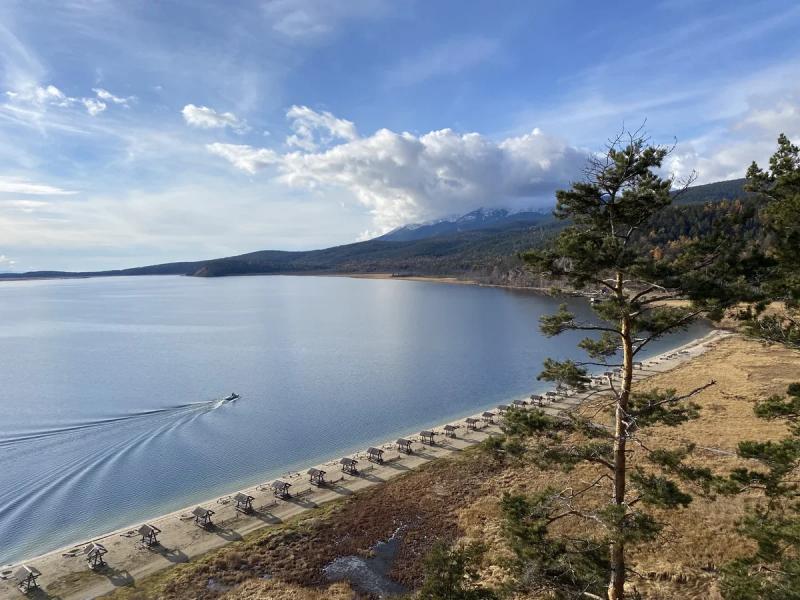
They say that the water in Lake Baikal is now “heavy”. Photo by ATOR
It seems that the time in the off-season here becomes like this: viscous and viscous.
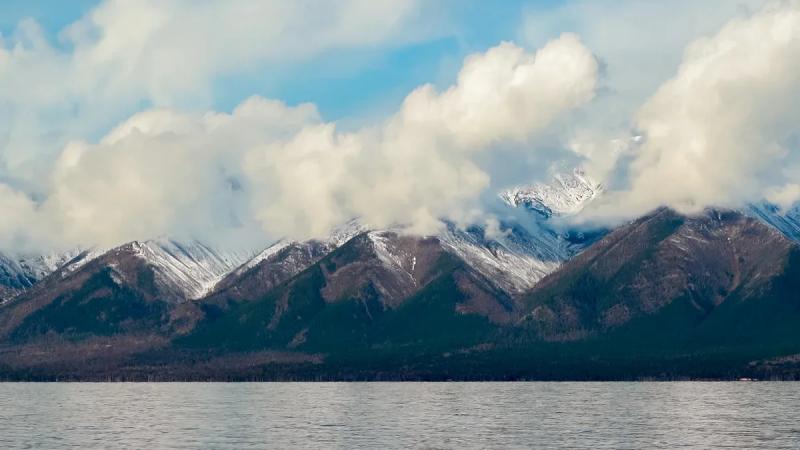
Mountains of the Holy Nose Peninsula. Photo by ATOR
The shores of Lake Baikal are empty and very, very sunny. For those who are “lost” in their own feelings, “lost themselves” and do not know where else to look, tired of the eternal race and have forgotten where they are running, these are ideal places.
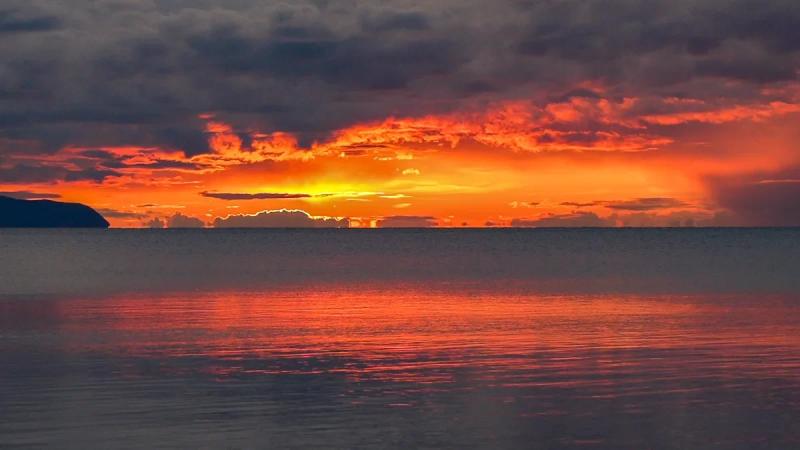
Sunset on Lake Baikal. Photo by ATOR
Ideal to freeze and look at your life distantly, without fuss, as you look from the mountain at Lake Baikal.
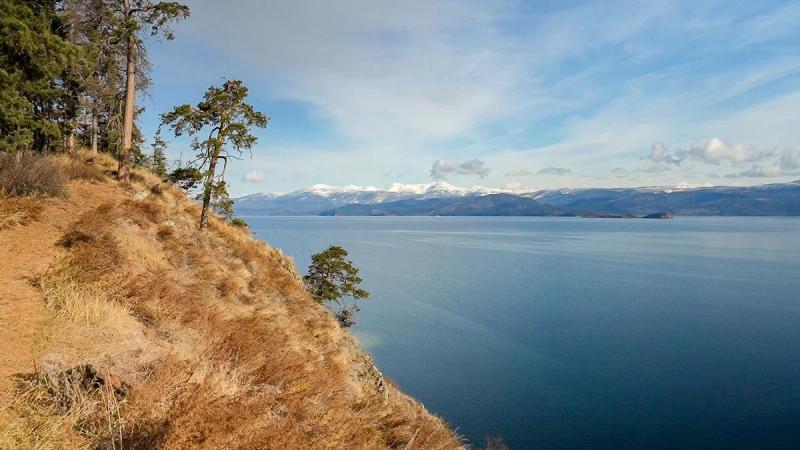
Look at your life as you look from the mountain to Lake Baikal. Photo ATOR
Here you can stop looking for meaning – it will find itself: in the rustle of the wave, in the noise of the wind in the pines, in the cracks of huge boulders along the shores and in footprints in the sand.
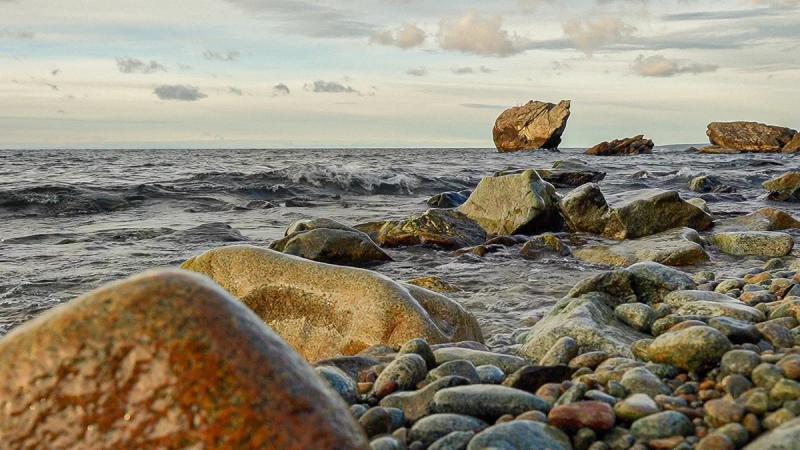
Baikal, stones. Photo by ATOR
In a scattering of diamond stars sparkling at night in a clear sky over the endless taiga.
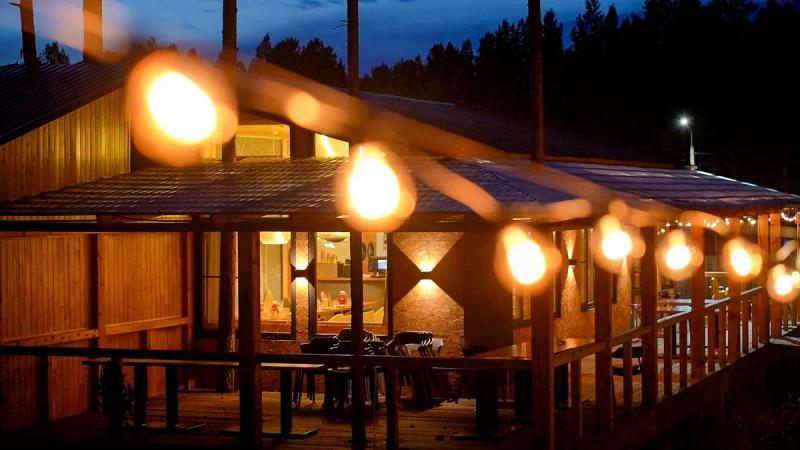
Glamping “Taiga” in Buryatia. It’s worth waiting for the night to see so many starshow many near big cities can never be counted. Photo ATOR
HOW WE FINALLY LOST TIME IN BURYATIA
And then the amazing land itself will begin to tell about its secrets: local small museums, for example – the last thing you expect to see in this side of geography. Such as Dabaevna’s Lace House in Ust-Barguzin, where a caring hostess has been collecting lace treasures from all over the country for decades.
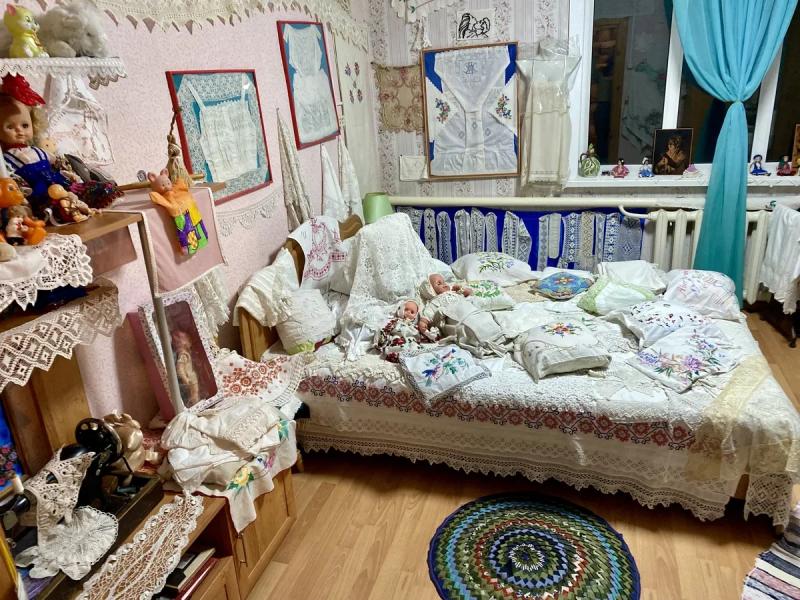
Dabaevna’s Private Lace House Museum in Ust-Barguzin. Photo ATOR.
Or about the local music that. It would never have occurred to me to listen, although it is much better than most of what the usual radio wave brings us.
Locals do not like it when pebbles are taken away from Lake Baikal. They say it won’t be enough for us then. But you can buy souvenirs: bring an omul, a Mongolian wool scarf or jewelry made of stones.

Buryat souvenirs. Photo by ATOR
But the most important thing is to collect memories “in your pocket” from sounds, shadows and reflections, details imprinted by nature itself in stones and leaves, so that you can be transported there again and again when you are looking for answers to difficult questions.
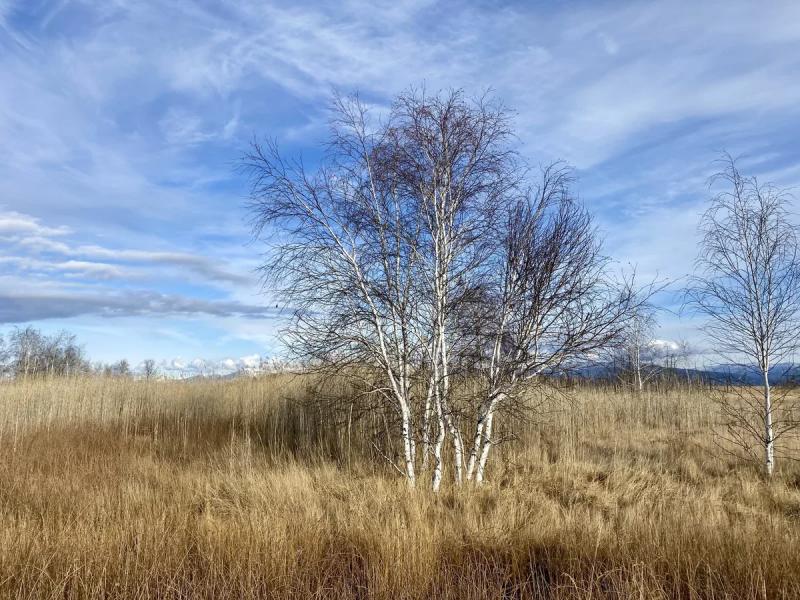
The most important souvenir is the peace of mind that can be found here. Photo by ATOR
The return flight from Ulan-Ude departs at about 10 a.m. And at about 10 a.m. he lands in Kazan. It turns out that time itself remains there – on the shores of ancient Baikal, dissolving into space.

The return flight departs at 10 a.m. and lands at 10 a.m. Photo by ATOR
And new tourists will be waiting there to give them a little mysterious beauty, simplicity and peace, at least for a few days.
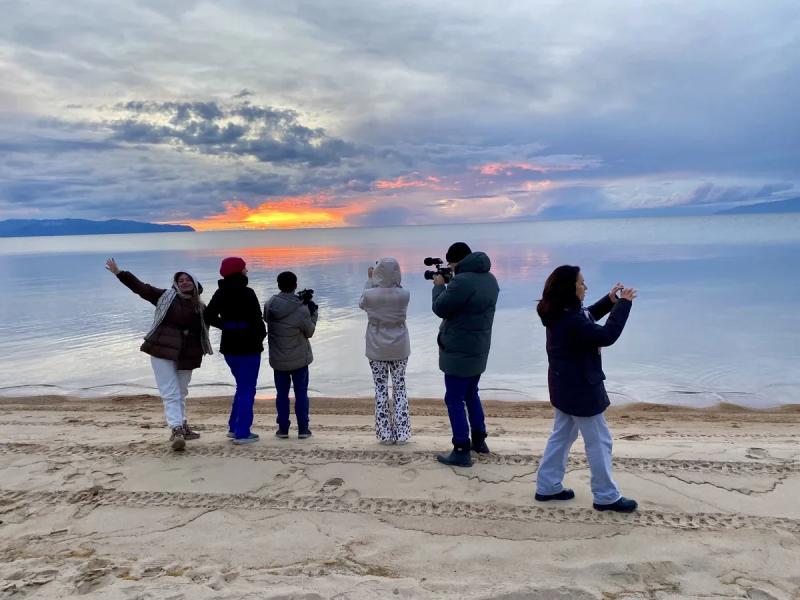
Baikal was left waiting for new travelers. Photo by ATOR
Ekaterina Tropova

